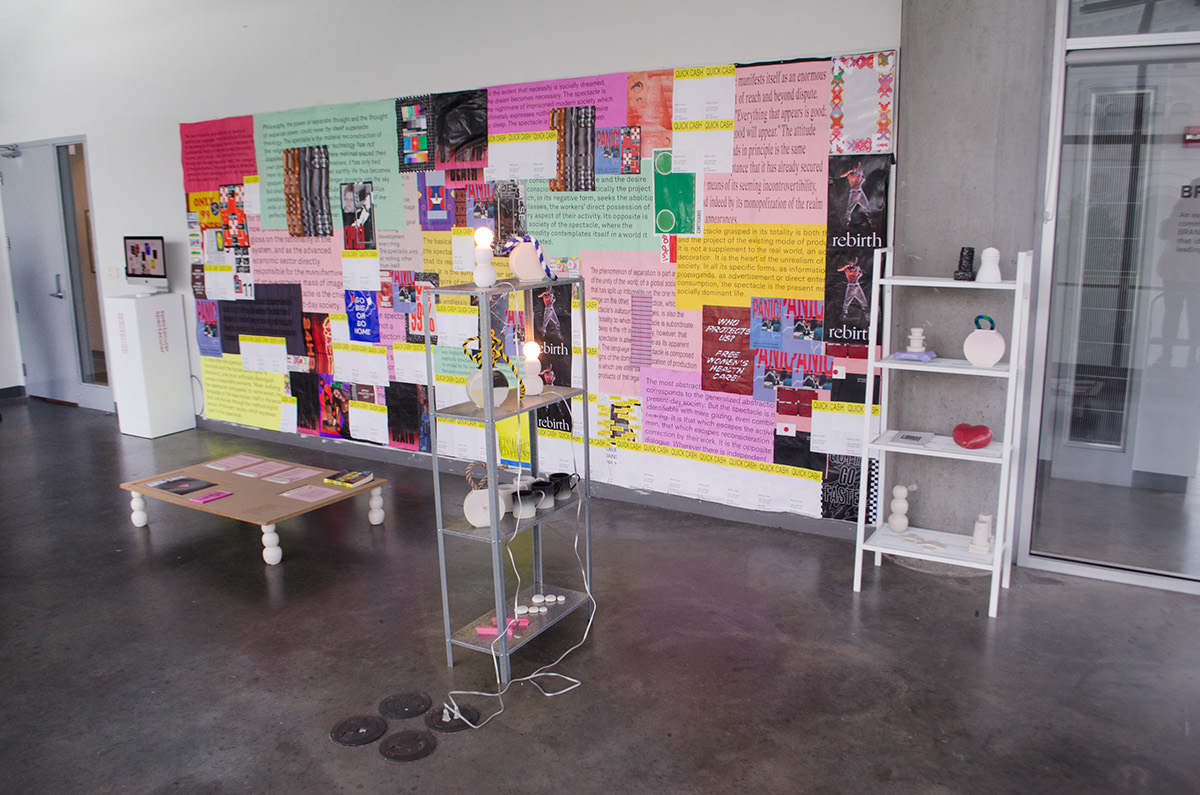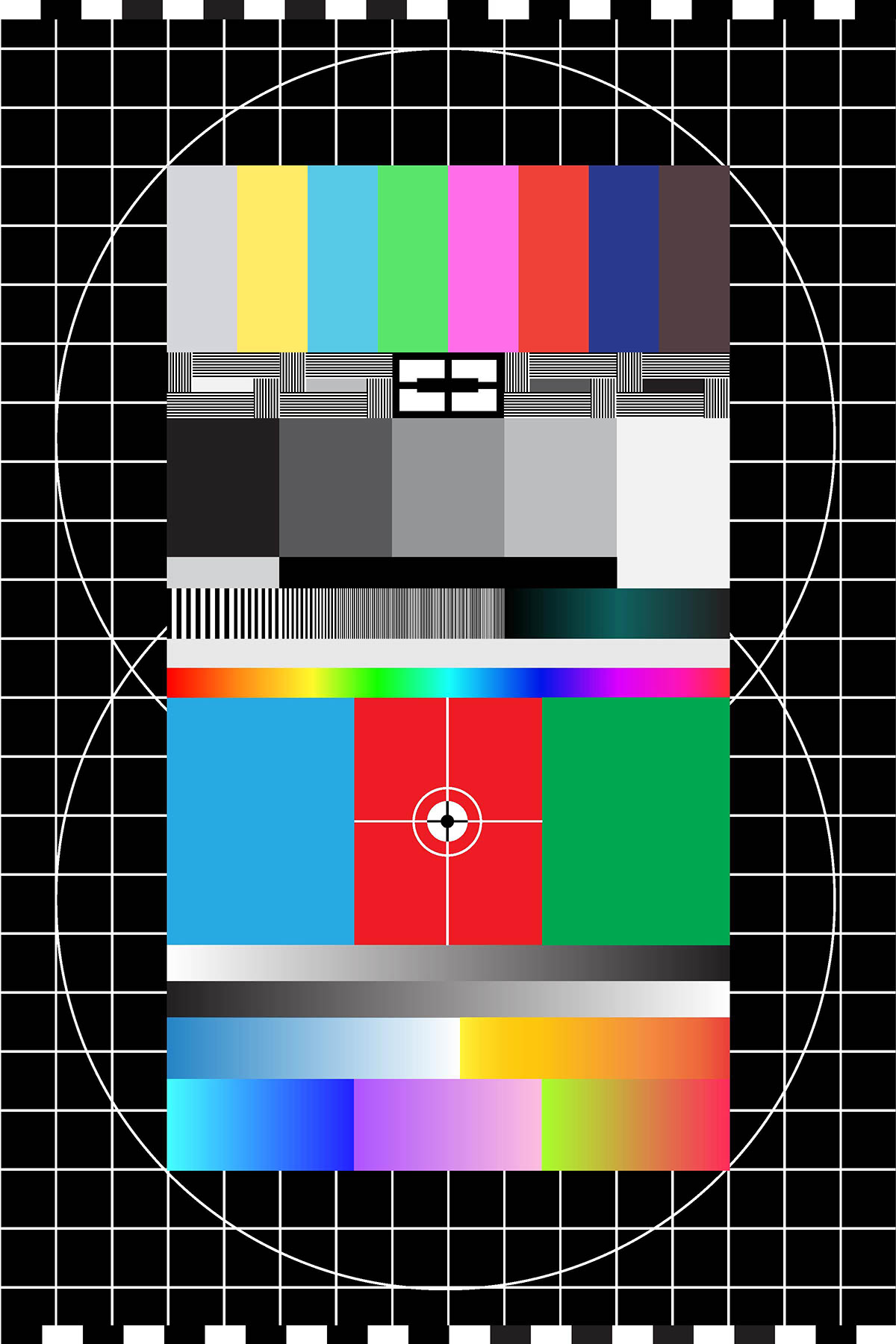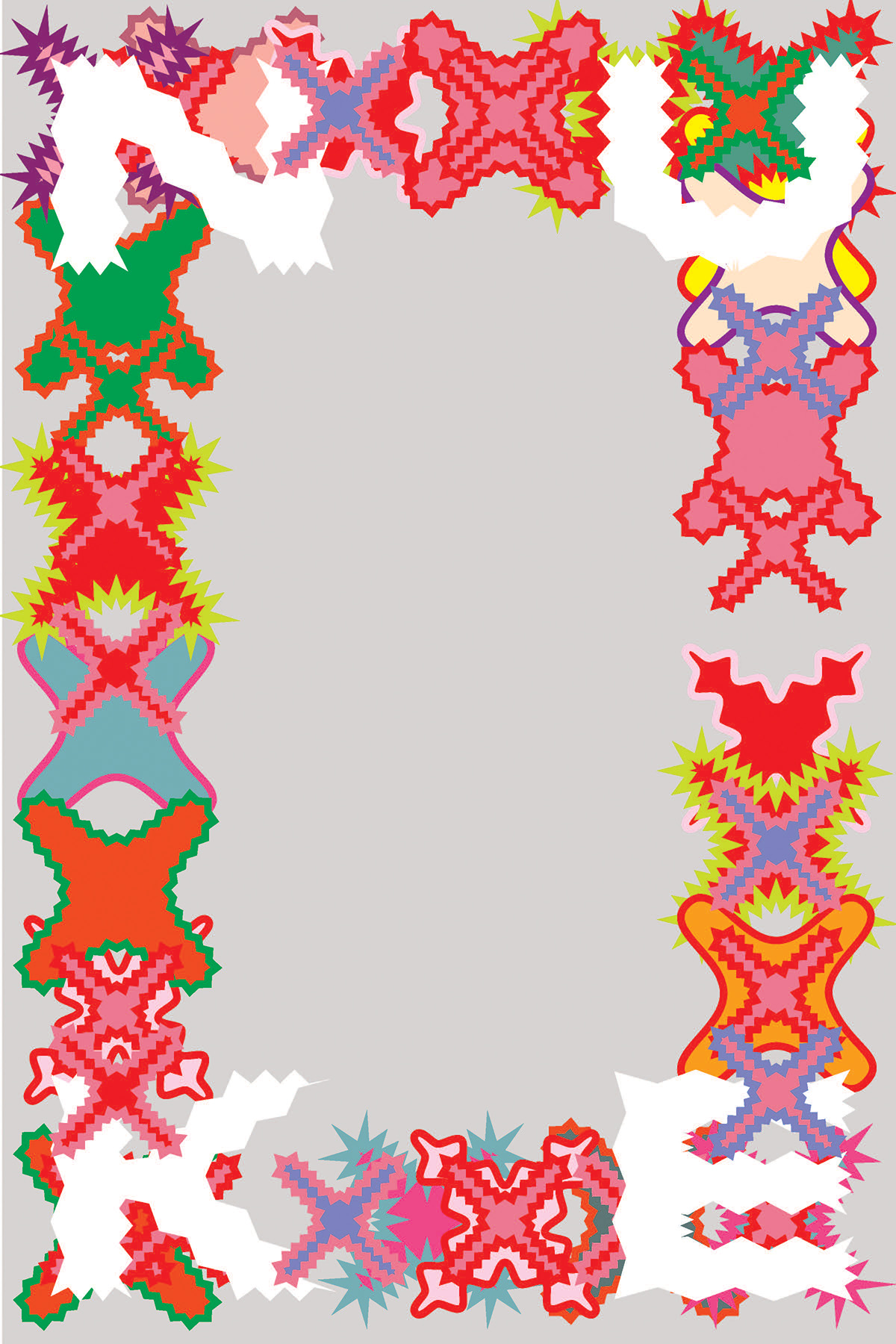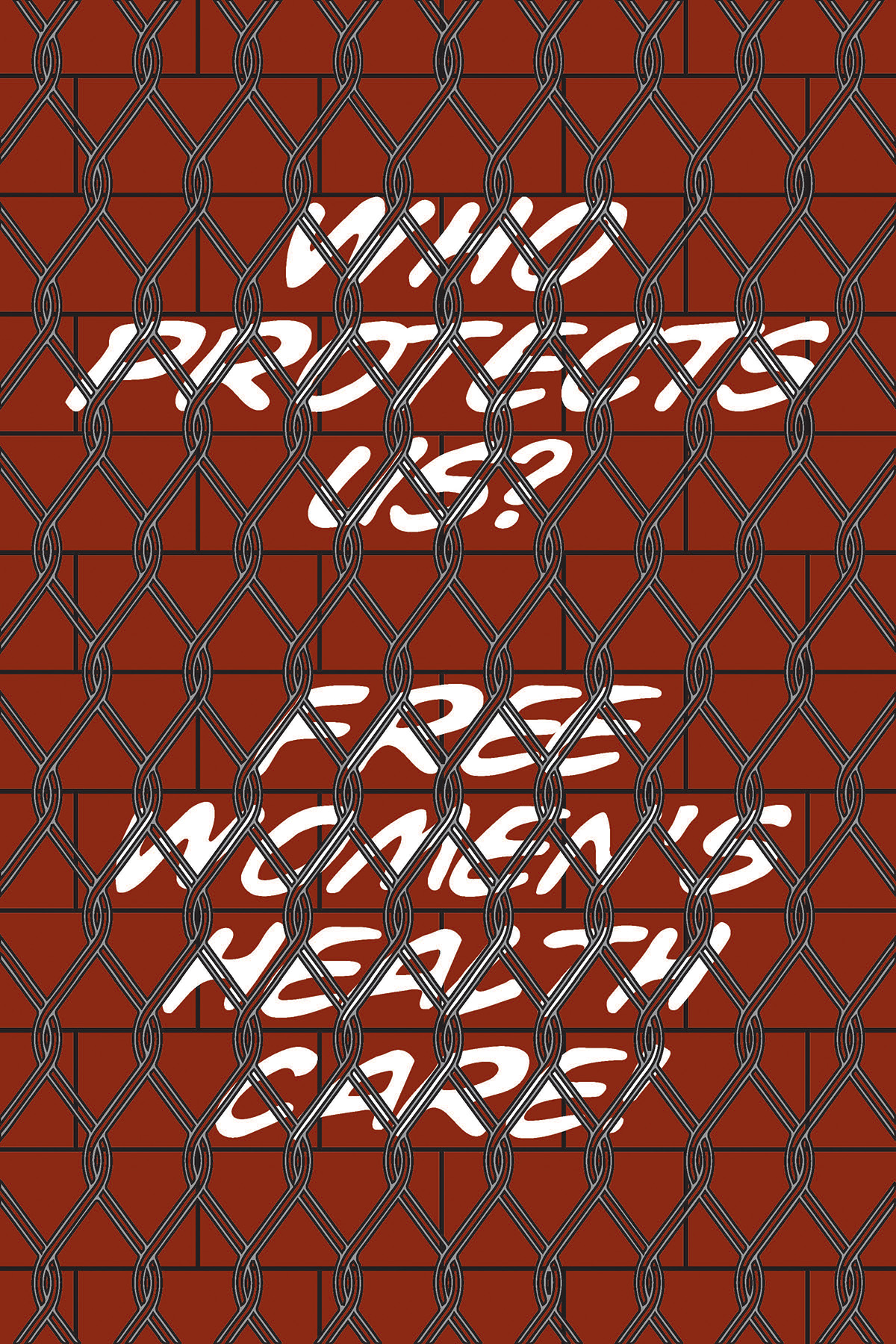(Please visit HERE for more images!)
In 1994, Jean Baudrillard wrote on hyperreality in Simulacra and Simulation, defining the term as “the generation by models of a real without origin or reality.” Baudrillard critiqued the danger of hyperreality, questioning the danger of blurred line between reality and simulacra. Baudrillard was heavily influenced by Marshall McLuhan’s Medium is the Message, especially ideas that were built on phenomenology and semiotics. As the World Wide Web grew to be more popular and accessible in the 90s, the art world also shifted gear towards the new medium—digital media. The fast-paced development came off rather intimidating than exciting, especially when the entire world (Globalization) came along. Artists were not only fascinated but threatened by global scale interaction and communication that internet had created. What internet offered was far more shocking than the televised spectacle of Vietnam War in 1960s.
Misha Kavka criticized the globalized media culture, and argued that the public no longer recognized the external [or, the physical] world as real. Kavka also stressed that Reality TV could be both compelling and threatening because these programs bridge the once-firm division between spectacle and experience, between the staged event and actuality, through mediated intimacy. Contemporary Capitalist society, heavily based on consumer culture, debilitates social participation by constantly bombarding the general public with chaos.
We pass by walls that are plastered with excessively saturated advertisements, repelling words and graphic images. As soon as the corporations adopted social media, they merged into the mass media; as a result, consumers were bombarded with information that seems endless. The mass media deeply understands the power of imagery in contemporary visual culture, and tends to abuse the power to manipulate the public. Scrolling down Facebook, Instagram and Twitter became an essential part of daily routines for not only the youth (or “Millennials”) but also the general public involved with business, advertising, marketing and public relations. The decision-making is mostly done in the hands of the performer but cannot exist without the spectators. Spectacle leaves the audience no choice of selection. (continued)
Misha Kavka criticized the globalized media culture, and argued that the public no longer recognized the external [or, the physical] world as real. Kavka also stressed that Reality TV could be both compelling and threatening because these programs bridge the once-firm division between spectacle and experience, between the staged event and actuality, through mediated intimacy. Contemporary Capitalist society, heavily based on consumer culture, debilitates social participation by constantly bombarding the general public with chaos.
We pass by walls that are plastered with excessively saturated advertisements, repelling words and graphic images. As soon as the corporations adopted social media, they merged into the mass media; as a result, consumers were bombarded with information that seems endless. The mass media deeply understands the power of imagery in contemporary visual culture, and tends to abuse the power to manipulate the public. Scrolling down Facebook, Instagram and Twitter became an essential part of daily routines for not only the youth (or “Millennials”) but also the general public involved with business, advertising, marketing and public relations. The decision-making is mostly done in the hands of the performer but cannot exist without the spectators. Spectacle leaves the audience no choice of selection. (continued)

Samuel Weber wrote in 2002, in War, Terrorism and Spectacle, “in order for something to be a spectacle, it must, first of all, take place. Which is to say, it must be localizable. Whether inside, in a theater (of whatever kind), or outside, in the open, a spectacle must be placed in order to be seen (or heard).” Weber also discusses Guy Debord’s The Society of the Spectacle, where he addresses the lack of human connections in modern society, contemporary consumer culture, commodity fetishism, dealing with issues such as class alienation, cultural homogenization and mass media. Debord argued that “the spectacle is simply the common language that bridges this division [between reality and hyperreality]. Spectators are linked by a one-way relationship to the very center that maintains their isolation from one another. The spectacle thus unites what is separate, but it unites it only in its separateness.” Debord points out the flaws in performance of spectacle, which he argues is the “one-way relationship,” stating that the spectacle unites the spectators together by forcing them to participate and engage. Weber agrees that the spectacle, at least as staged “by the mainstream broadcast media, seeks simultaneously to assuage and exacerbate anxieties of all sorts by providing images to which they can be attached, ostensibly comprehended and above all, removed.”
The word spectacle comes from the roots of Latin spectare, meaning “to view” or “to watch.” The spectacle was considered as an element of performance or theater, which expanded rapidly to vast array of contexts and media since the birth of technology. “Television shows broadcast across a disparate range of locales and times, and reach a spectator audience who may not even be present in one place or time. The spectacle becomes temporally and spatially disseminated in a doubling of meditation so that the individual’s experience of the spectacle is experienced as a mediation of technological apparatus [a digital screen, radio, etc.]8” Spectacle is often used as performative element, not only in theater but also in political movement, public speech, advertising and marketing. As technology develops, examples of spectacles also reached broader formats — virtual reality (VR) experience [Oculus Rift, Google Cardboard], 4D theaters, Siri, accessible 3D printing, and the list grows expeditiously.
One of the early examples of graphic design as spectacle was hypnotic brainwashing of Nazi party, plastering the walls of Germany with powerful images of Hitler and propaganda messages to frighten the public. Poster is a medium that was easily mass-produced, that could reach large audience ranging from the heart of city to small towns in suburbs. Realizing the power of imagery and repetitive messages, they attempted to familiarize their bias into the lives of the general public. Another example is Black Panthers Party, formed in 1966 in Oakland, California. BPP was founded by Huey Newton and Bobby Seale, who felt the need to start a revolution for police brutality against African-American people. Newton describes their group’s symbol, Black Panther, as “[it] doesn’t strike first, but if the aggressor strikes first, then he’ll attack.9” The group was formed to self-defend against the oppressors, to fight against systematic and institutionalized racism, and to empower African-American communities. The Black Panthers used appropriate imagery and posters to promote and emphasize their voice, often carrying flags of printed logo of Black Panther and the fist of Black Power.
After the civil rights movement, including Voting Rights Act of 1965 and the Civil Rights Act of 1968, the artist community also joined in the conversation of equality and social responsibility. In 1977, Jenny Holzer made a body of work titled Truisms, which she “typeset the sentences in alphabetical order and printed them inexpensively, using commercial printing processes. She then distributed the sheets at random and pasted them up as posters around the city. [They] eventually adorned a variety of formats, including T-shirts and baseball caps [Figure 3-1].” Holzer wrote a series of witty, political and thought-provoking statements in repetitive format that she later printed on shirts and posters. Using the simplest formal qualities, such as cheap colored paper and typeset Futura Oblique (as also used in Barbara Kruger’s text work), Holzer was successful to get her message across the world, even gaining opportunities to project her statements in large scale onto the government owned buildings. Following Holzer’s public conversations, AIDS Coalition to Unleash Power (ACT UP) formed in March 1987 in New York, collecting artists around the city to create public works to rebel against silence doctors who rejected proposals to research the causes of AIDS. One of the founding members of ACT UP, Jason Baumann, designed Silence = Death poster in 1987. “In essence and intention, the political poster is a public thing. It comes to life in the public sphere, and is academic outside of it. [The poster] is a product of collective world-making, the sort of collectivity which moves every one of us, as individuals and as a culture, and which is transformative.” Especially in New York that is owned by its citizens, ACT UP members agreed that when New Yorkers need to talk to each other, “there is always the street”, and worked on the poster to become a power symbol of LGBT activism at the time. (continued)
The word spectacle comes from the roots of Latin spectare, meaning “to view” or “to watch.” The spectacle was considered as an element of performance or theater, which expanded rapidly to vast array of contexts and media since the birth of technology. “Television shows broadcast across a disparate range of locales and times, and reach a spectator audience who may not even be present in one place or time. The spectacle becomes temporally and spatially disseminated in a doubling of meditation so that the individual’s experience of the spectacle is experienced as a mediation of technological apparatus [a digital screen, radio, etc.]8” Spectacle is often used as performative element, not only in theater but also in political movement, public speech, advertising and marketing. As technology develops, examples of spectacles also reached broader formats — virtual reality (VR) experience [Oculus Rift, Google Cardboard], 4D theaters, Siri, accessible 3D printing, and the list grows expeditiously.
One of the early examples of graphic design as spectacle was hypnotic brainwashing of Nazi party, plastering the walls of Germany with powerful images of Hitler and propaganda messages to frighten the public. Poster is a medium that was easily mass-produced, that could reach large audience ranging from the heart of city to small towns in suburbs. Realizing the power of imagery and repetitive messages, they attempted to familiarize their bias into the lives of the general public. Another example is Black Panthers Party, formed in 1966 in Oakland, California. BPP was founded by Huey Newton and Bobby Seale, who felt the need to start a revolution for police brutality against African-American people. Newton describes their group’s symbol, Black Panther, as “[it] doesn’t strike first, but if the aggressor strikes first, then he’ll attack.9” The group was formed to self-defend against the oppressors, to fight against systematic and institutionalized racism, and to empower African-American communities. The Black Panthers used appropriate imagery and posters to promote and emphasize their voice, often carrying flags of printed logo of Black Panther and the fist of Black Power.
After the civil rights movement, including Voting Rights Act of 1965 and the Civil Rights Act of 1968, the artist community also joined in the conversation of equality and social responsibility. In 1977, Jenny Holzer made a body of work titled Truisms, which she “typeset the sentences in alphabetical order and printed them inexpensively, using commercial printing processes. She then distributed the sheets at random and pasted them up as posters around the city. [They] eventually adorned a variety of formats, including T-shirts and baseball caps [Figure 3-1].” Holzer wrote a series of witty, political and thought-provoking statements in repetitive format that she later printed on shirts and posters. Using the simplest formal qualities, such as cheap colored paper and typeset Futura Oblique (as also used in Barbara Kruger’s text work), Holzer was successful to get her message across the world, even gaining opportunities to project her statements in large scale onto the government owned buildings. Following Holzer’s public conversations, AIDS Coalition to Unleash Power (ACT UP) formed in March 1987 in New York, collecting artists around the city to create public works to rebel against silence doctors who rejected proposals to research the causes of AIDS. One of the founding members of ACT UP, Jason Baumann, designed Silence = Death poster in 1987. “In essence and intention, the political poster is a public thing. It comes to life in the public sphere, and is academic outside of it. [The poster] is a product of collective world-making, the sort of collectivity which moves every one of us, as individuals and as a culture, and which is transformative.” Especially in New York that is owned by its citizens, ACT UP members agreed that when New Yorkers need to talk to each other, “there is always the street”, and worked on the poster to become a power symbol of LGBT activism at the time. (continued)
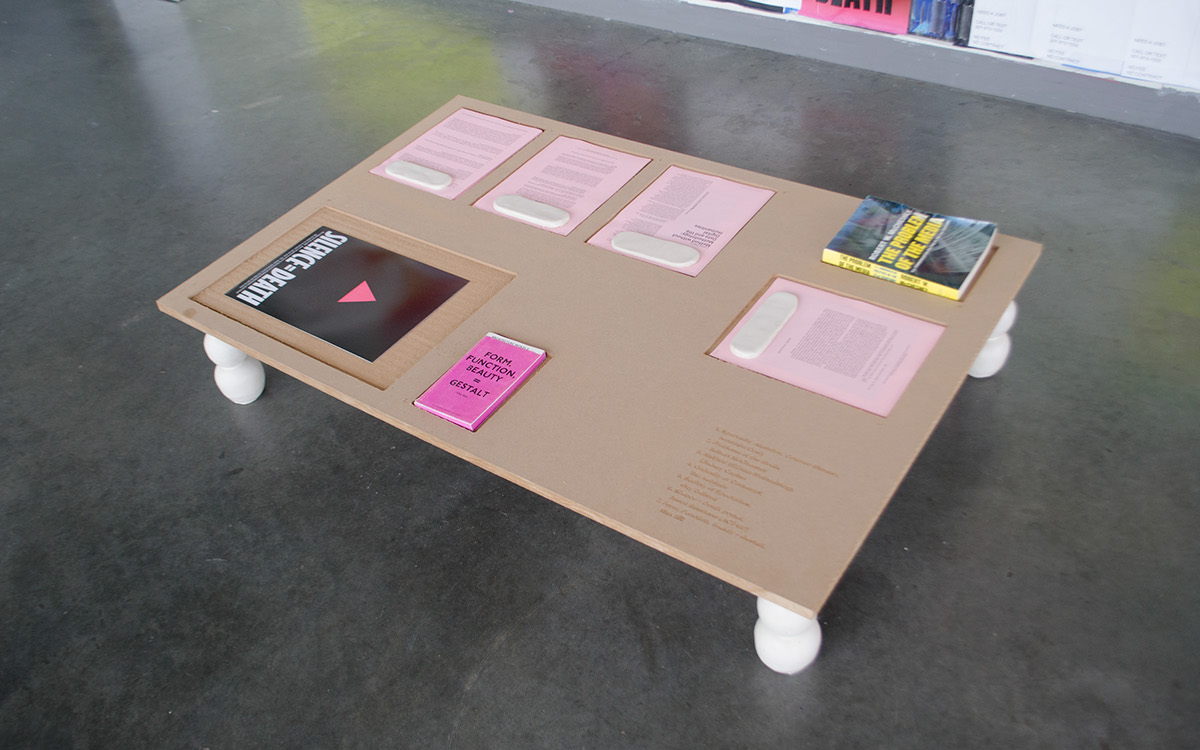
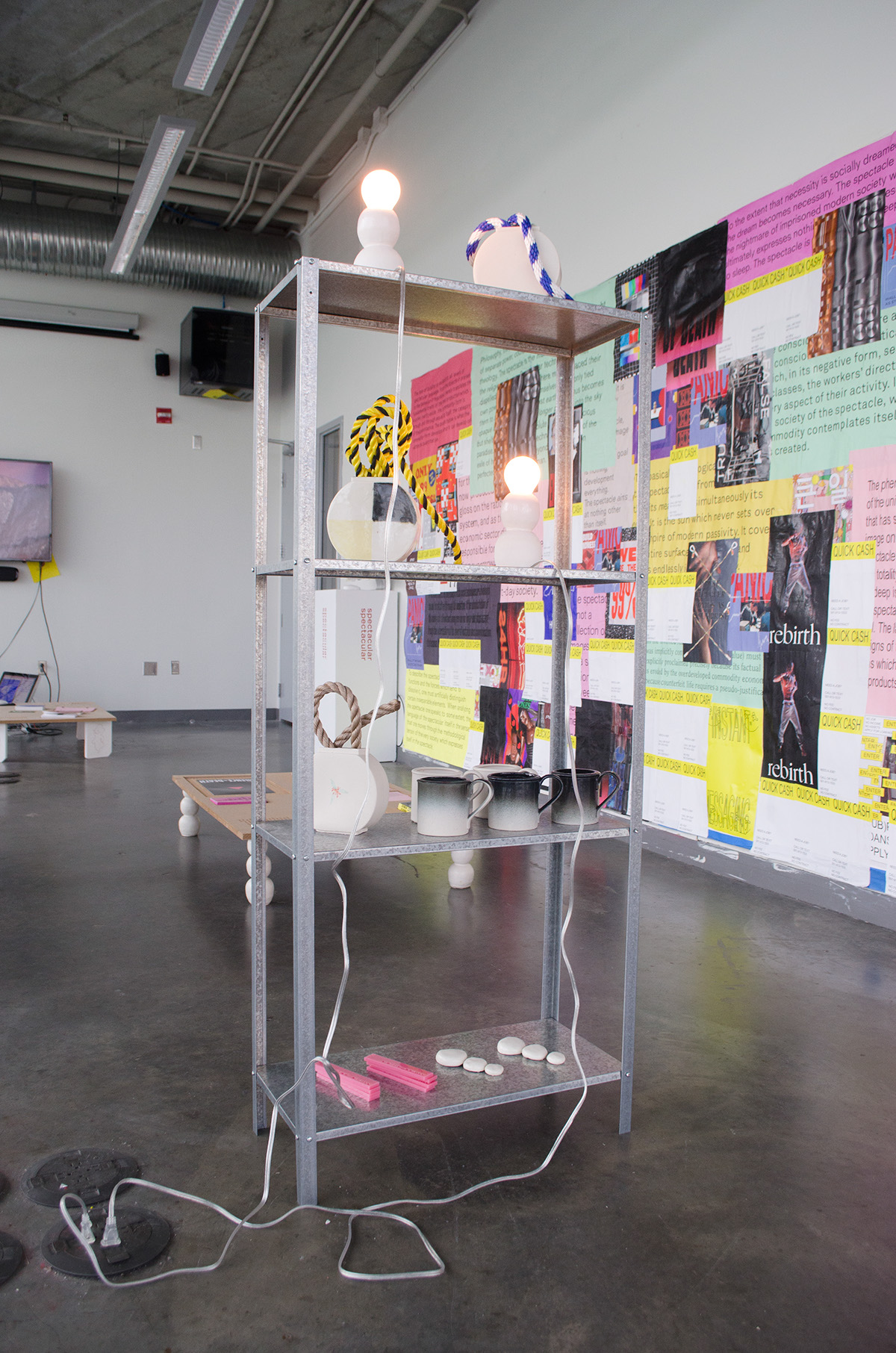
As Baumann explains, most of the posters on streets are meant to be “declarative, provocative, and meant to stimulate inquiry.” The poster as the spectacle, as the thought-provoking medium, seems to be relevant to this day. For more recent example, Ficciones Typografika is a curatorial practice based on collective design, founded by Erik Brandt. Brandt is based in Minneapolis, where he curates three wooden bulletin boards outside his personal home with works submitted from designers around the world. Brandt curates the posters that often illustrates the zeitgeist, or purely experimental graphics that push the boundaries of graphic design.
Spectacle in the contemporary society appears as dangerous element, since it’s often used by corporations, politicians and performers who abuse the temporal shock. When the “temporal” shock repeats itself or stand back to back with other spectacles, it becomes a massive explosion which numbs and desensitizes the spectators. The mass media overplaying the graphic videos of police brutality, overdrawing attention to unnecessary spectacles (such as “What did this celebrity wear to dinner? Who did he cheat on his wife for third time?” headlines), and emphasizing false hyperreal imagery (hyper-real photoshopped models on magazine covers) can deliver heavily biased information to the spectators, considered as abuse of authority. Spectacle can be used in a way to provoke critical thinking and begin conversations about devalued issues, which contemporary graphic designers can take a big part in, especially in the fields of marketing, advertising and mainly, the mass media.
Spectacle in the contemporary society appears as dangerous element, since it’s often used by corporations, politicians and performers who abuse the temporal shock. When the “temporal” shock repeats itself or stand back to back with other spectacles, it becomes a massive explosion which numbs and desensitizes the spectators. The mass media overplaying the graphic videos of police brutality, overdrawing attention to unnecessary spectacles (such as “What did this celebrity wear to dinner? Who did he cheat on his wife for third time?” headlines), and emphasizing false hyperreal imagery (hyper-real photoshopped models on magazine covers) can deliver heavily biased information to the spectators, considered as abuse of authority. Spectacle can be used in a way to provoke critical thinking and begin conversations about devalued issues, which contemporary graphic designers can take a big part in, especially in the fields of marketing, advertising and mainly, the mass media.
